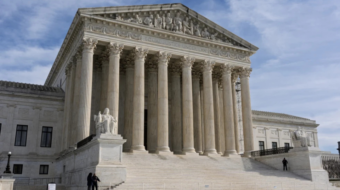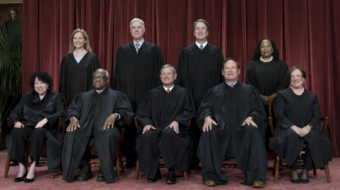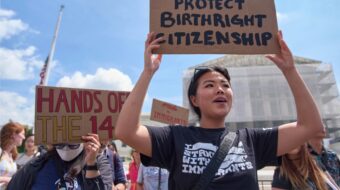
With only six days left until Election Day, Nov. 3, the U.S. Supreme Court has begun ruling at breakneck speed on several vote suppression lawsuit appeals filed by Trump’s campaign and the state- and national-level Republicans.
In North Carolina, by a 5-3 vote Wednesday, Oct. 29, the Supreme Court said it would allow absentee ballots to be received and counted up to nine days after Election Day. Republicans had asked the high court to intervene and return to a shorter ballot timeline. Under the Supreme Court’s order, mailed ballots postmarked on or before Election Day must be received by 5 p.m. on Nov. 12 to be counted.
The quickness of these two recent silent orders left the newest member of the high court only one reasonable option: recusal. Justice Amy Coney Barrett took no part in deciding the fate of absentee ballots or their deadline “because of the need for a prompt resolution and because she has not had time to fully review the parties’ filings’.”
Chief Justice John Roberts and Justice Brett Kavanaugh joined the three Democrat-named justices in the majority. Three Republican-nominated justices, Samuel Alito, Neil Gorsuch, and Clarence Thomas, dissented.
“North Carolina voters had a huge win tonight at the U.S. Supreme Court. The court upheld the State Board of Elections’ effort to ensure that every eligible vote counts, even during a pandemic,” said N.C. Attorney General Josh Stein, a Democrat, in a statement hailing the court’s decision. “Voters must have their mail-in ballots postmarked by Election Day, but now we all have certainty that every eligible vote will be counted. Let’s vote!”
Republican state Senate leader Phil Berger claimed the high court’s order will undermine public confidence in the government.
“The question is simple: May unelected bureaucrats on a state panel controlled by one political party overrule election laws passed by legislatures, even after ballots have already been cast? If public confidence in elections is important to our system of government, then hopefully the answer to that question is no,” Berger said in a statement.
The State Board of Elections had lengthened the period as part of a late September legal settlement with the North Carolina Alliance for Retired Americans, a union-affiliated group. The settlement extending the deadline ruled on by federal judge William Osteen also removed requirements for fixing errors found on absentee ballots, while keeping the rule requiring an absentee ballot witness signature—in a nod towards a bipartisan agreement.
Following a 4-4 split ruling in Pennsylvania, allowing ballots postmarked by Election Day, Nov. 3, to be accepted and counted up to three days after the election, state Republicans filed an emergency appeal—counting on Justice Amy Coney Barrett to rule along party lines and cast a tie-breaking vote in their favor.
But on Wednesday, the court said it would not grant a quick pre-election review of the latest Republican appeal, leaving the extension in place, while leaving unclear the question of whether the ballots would ultimately be counted. The court’s order left open the possibility of taking up and deciding whether the extension ordered by the Pennsylvania high court was proper.
This extension issue will play an enormous role if Pennsylvania becomes the crucial state needed to win the White House, and the votes received between Nov. 3 and Nov. 6 will be critically decisive.
The high court ruled hours after Pennsylvania’s Secretary of State agreed to segregate ballots received in the mail after polls close on Tuesday and before 5 p.m. on Nov. 6.
In a typical uncouth statement, Trump’s campaign suggested that those ballots would never be counted.
“We secured a huge victory when the Pennsylvania Secretary of State saw the writing on the wall and voluntarily complied with our injunction request, segregating ballots received after the Nov. 3 deadline to ensure they will not be counted until the Supreme Court rules on our petition,” said Justin Clark, a deputy campaign manager, in an interview.
The statement, however, is misleading and hardly holds any truth. The Supreme Court’s order does not invalidate those ballots arriving between the end of day Nov. 3 and end of day Nov. 6. The high court only deferred that “the most important issue in the case, which is whether state courts can change the time, place and manner of elections, contrary to the rules adopted by the Legislature.”
That means the Supreme Court would only rule on the actions by the state’s high court, not the validity or acceptability of those mailed-in ballots.
“This is an enormous victory for all Pennsylvania voters, especially seniors who should not have to put their health at risk during the pandemic to cast a ballot that will be counted,” said Richard Fiesta, the Alliance for Retired Americans executive director, in a statement.
The ARA was one of several organizations suing the state of Pennsylvania to extend the ballot deadline.
Writing for the majority, Justice Samuel Alito indicated he would support the high court’s future review of the issue. But, he wrote, “I reluctantly conclude that there is simply not enough time at this late date to decide the question before the election.”
Again, new Justice Barrett recused herself from this case.










